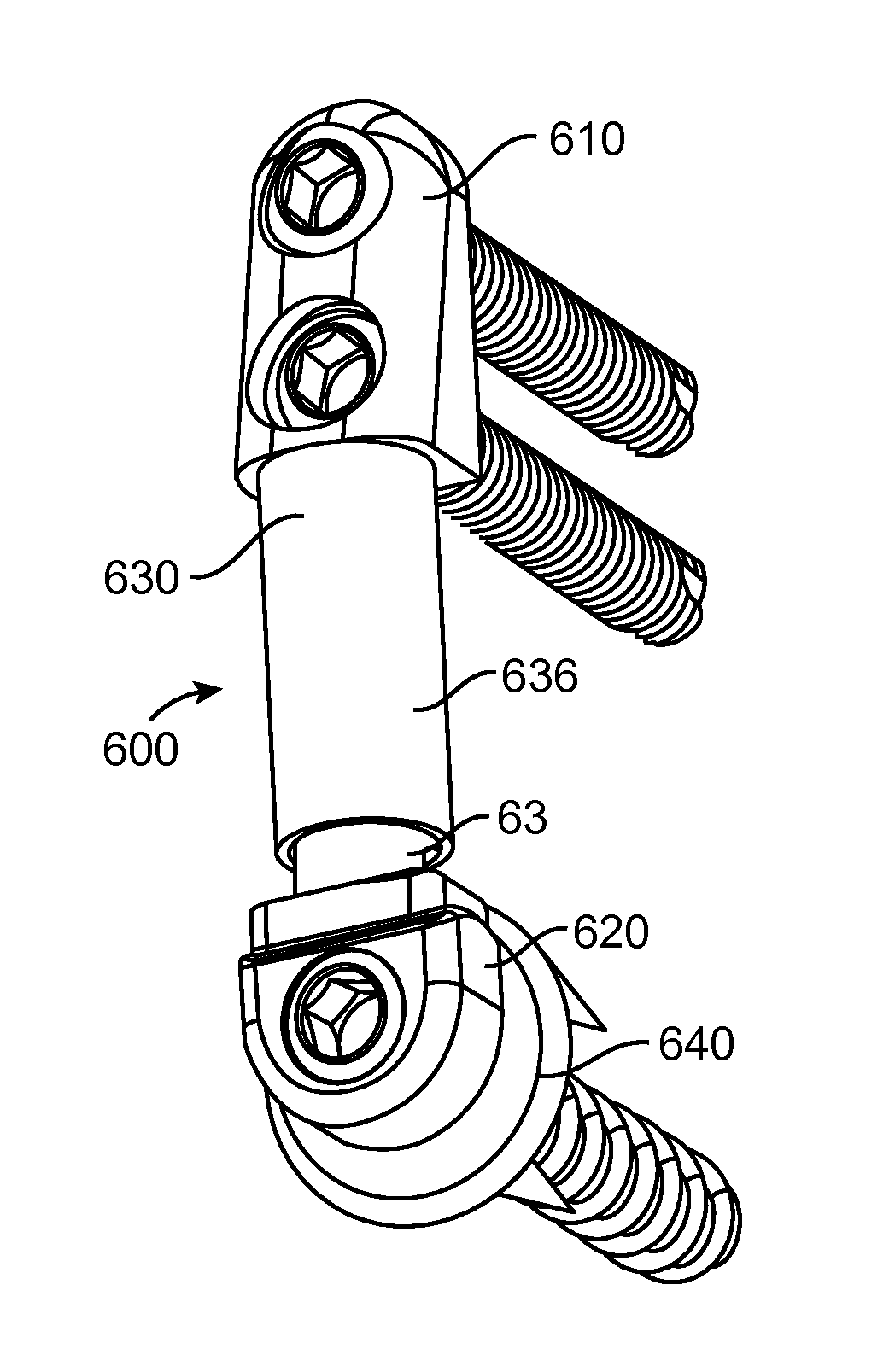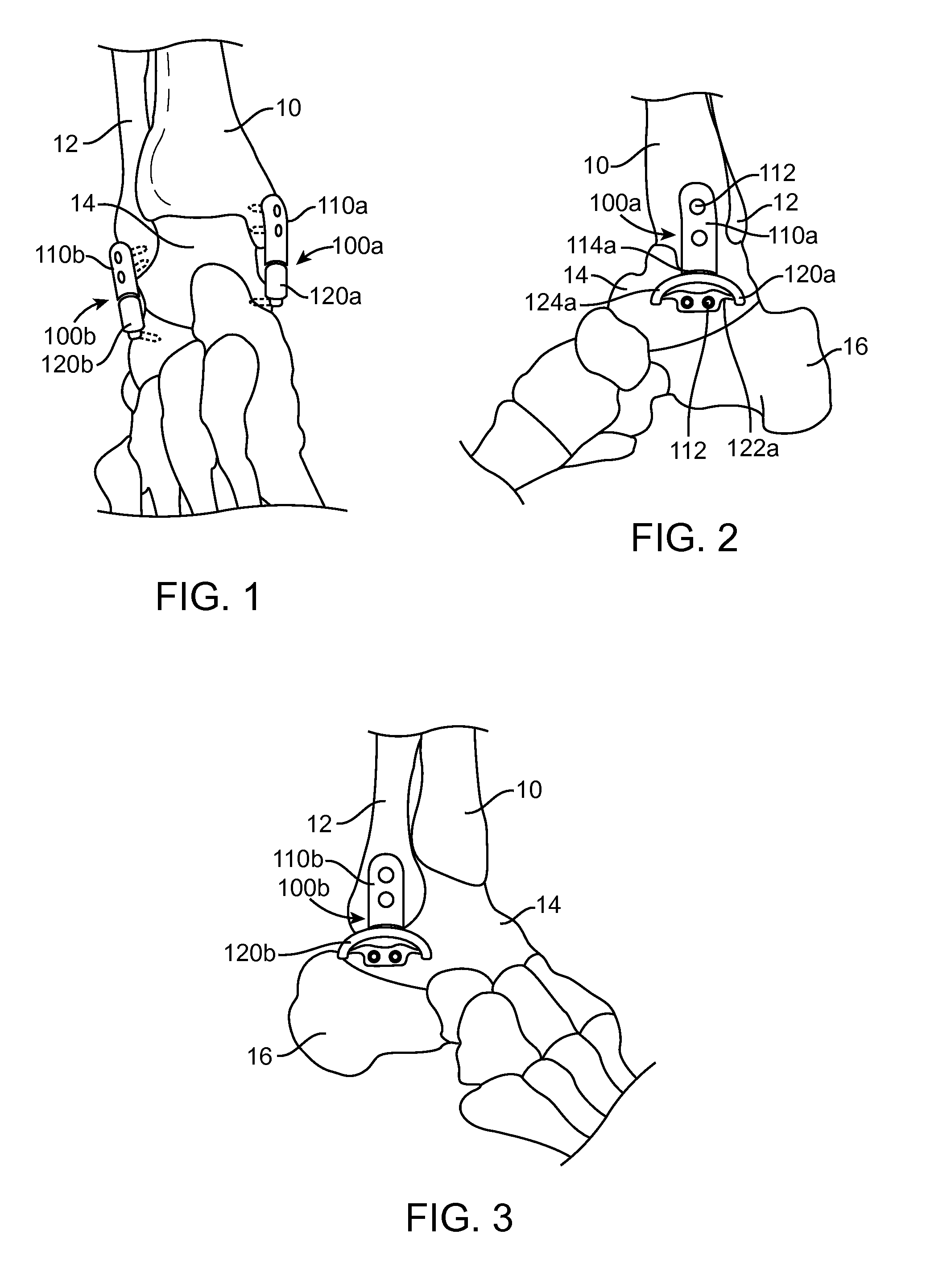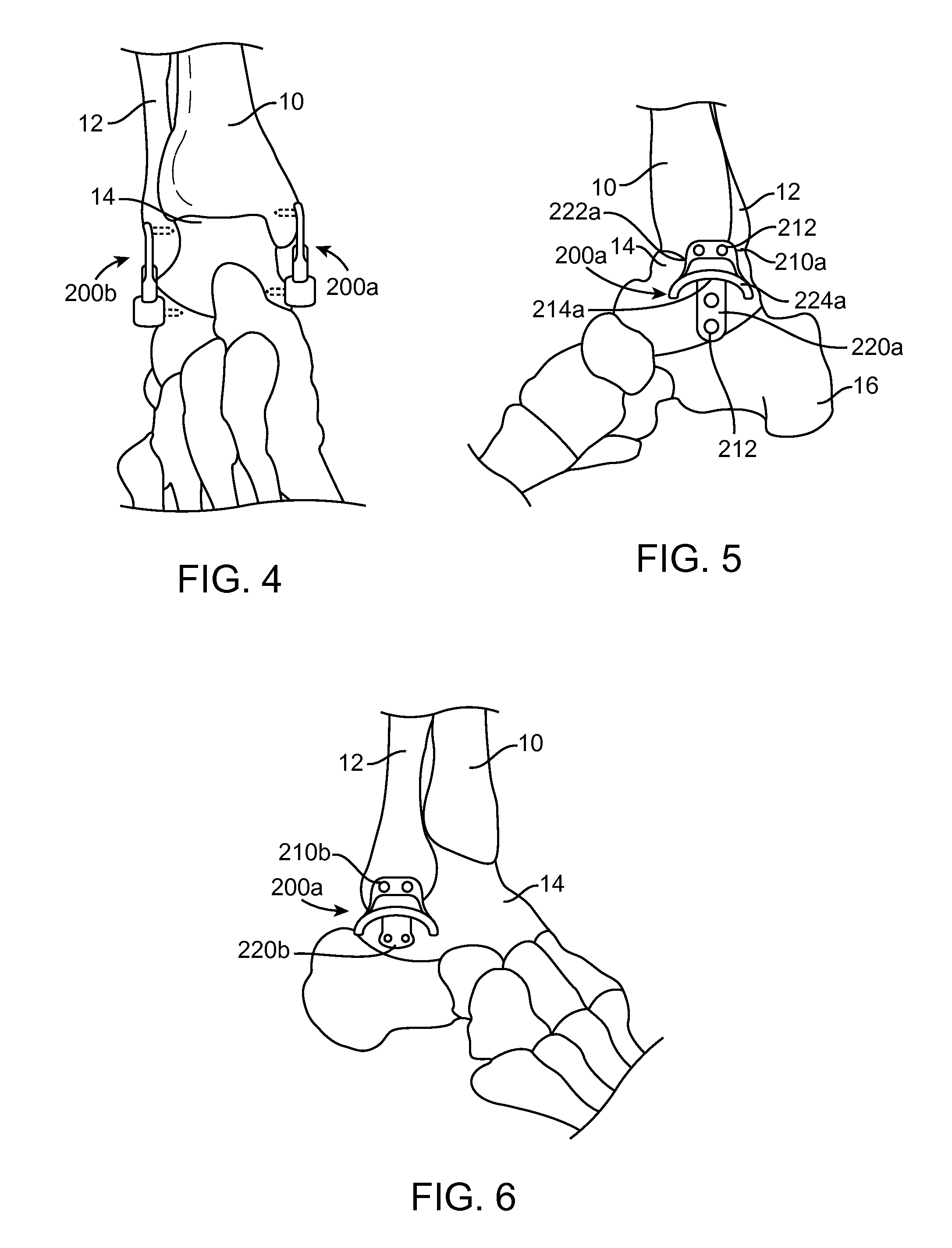Implantable Device For Relieving Ankle Pain
a technology of ankle joint and implantable device, which is applied in the field of treating ankle joints, can solve the problems of pain in the patient's ankle upon weight bearing, subcutaneous inflammation, and atrophy of the regional muscles
- Summary
- Abstract
- Description
- Claims
- Application Information
AI Technical Summary
Benefits of technology
Problems solved by technology
Method used
Image
Examples
Embodiment Construction
[0051]Referring now to the drawings, which are provided by way of example and not limitation, the present invention is directed towards apparatus and methods for treating the ankle joint. The present disclosure seeks to alleviate pain associated with the function of osteoarthritis of the ankle joint and other pain in the ankle joint. Whereas the present disclosure is particularly suited to address issues associated with osteoarthritis of a hinged synovial joint, the energy manipulation accomplished by the disclosed apparatus and methods lends itself well to broader applications.
[0052]The implantable devices shown and described herein are connected across a joint, such as an ankle joint, for reducing pain in the joint by reducing joint loading. The implantable load absorbing devices generally include a first load transmission support configured to be secured to the tibia and a second load transmission support configured to be secured to the talus on the medial and / or lateral side of ...
PUM
 Login to View More
Login to View More Abstract
Description
Claims
Application Information
 Login to View More
Login to View More - R&D
- Intellectual Property
- Life Sciences
- Materials
- Tech Scout
- Unparalleled Data Quality
- Higher Quality Content
- 60% Fewer Hallucinations
Browse by: Latest US Patents, China's latest patents, Technical Efficacy Thesaurus, Application Domain, Technology Topic, Popular Technical Reports.
© 2025 PatSnap. All rights reserved.Legal|Privacy policy|Modern Slavery Act Transparency Statement|Sitemap|About US| Contact US: help@patsnap.com



